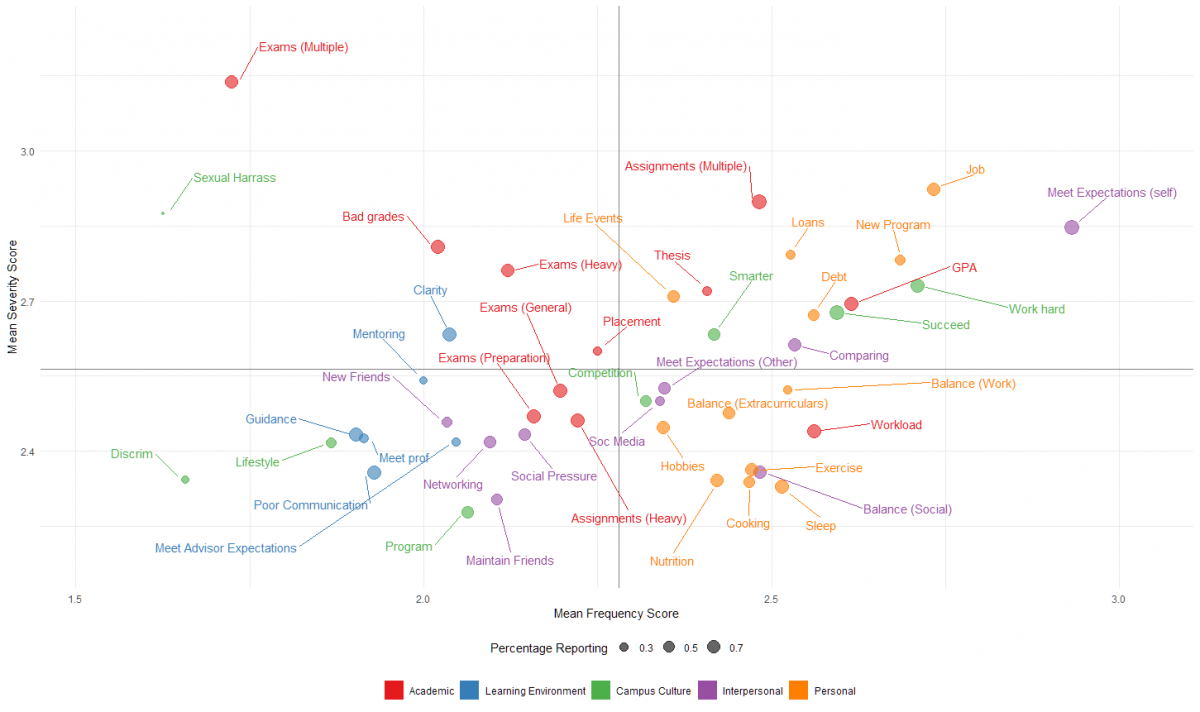Improving understanding of student stress
February 3, 2020
Share

There has been a growing demand for wellness services at universities across Canada in recent years. Brooke Linden, a post-doctoral fellow with the Queen’s Health Services and Policy Research Institute, believes that a lot of work still needs to be done to better understand the factors that affect students’ mental health and wellbeing. That’s why she is developing a method for determining the most impactful stressors for students.
“If post-secondary institutions have a method of understanding the most frequent and severe stressors on their campuses, they may be able to make positive adjustments to mental health promotion and mental illness prevention programming that can improve students’ overall mental wellbeing. But first, we need to improve our understanding of how to best target those efforts,” says Dr. Linden.
Finding the stressors in student life
As part of her research, Dr. Linden has developed the Post-Secondary Student Stressors Index (PSSI) that categorizes the stressors that affect students in five areas: academics, the learning environment, the campus culture, interpersonal stressors, and personal stressors. The tool, delivered in an online survey format, invites students to evaluate stressors by both severity and frequency. This allows for the identification of “low hanging fruit,” those frequent and severe stressors upon which schools can focus.
Dr. Linden developed the PSSI while earning her PhD at Queen’s from the department of Public Health Sciences, piloting the tool on campus in Winter 2019. To determine the stressors among Queen’s students, Dr. Linden consulted with over 500 of them from across the university through focus groups, cognitive interviewing, and online surveys.
Now, as a post-doctoral research fellow at Queen’s, she is working to evaluate the PSSI at other post-secondary institutions, with the goal of partnering with at least one university in each province. Dr. Linden is interested in determining whether different patterns of stress are observed due to factors like size, location, and campus type.

Choosing Queen’s
Dr. Linden first became interested in this work while pursuing her master’s degree in sociology. Her MA thesis focused on post-secondary student mental health, but she felt like she needed to adopt a more scientific method of understanding student stress.
When exploring doctoral programs, she learned about the work of Heather Stuart, the Bell Canada Mental Health and Anti-Stigma Chair at Queen’s. As a result, Dr. Linden decided to make the jump from the social sciences to the health sciences, enrolling in the Mini-Master of Epidemiology program in the Department of Public Health Sciences at Queen’s, which she believed would offer her the intellectually dynamic environment she was seeking in a graduate program.. After defending her Mini-Master’s project, Dr. Linden was promoted to the PhD program. She completed and defended her PhD thesis three years later, in fall 2019.
“Dr. Stuart and Queen’s University have given me all the support I need to explore the issue of post-secondary student stress and mental health outcomes. I am confident that the PSSI is a well-validated tool that has the potential to make a positive impact on the current landscape of post-secondary student mental health at universities across Canada,” says Dr. Linden.
Learn more about Dr. Linden’s research by reading her open-access article on the PSSI.
Dr. Linden is not the only researcher at Queen’s investigating post-secondary student mental health. Anne Duffy, Professor in the Department of Psychiatry, is currently researching the topic through a longitudinal study called U-Flourish. Read more about Dr. Duffy’s work on the Research@Queen’s website.